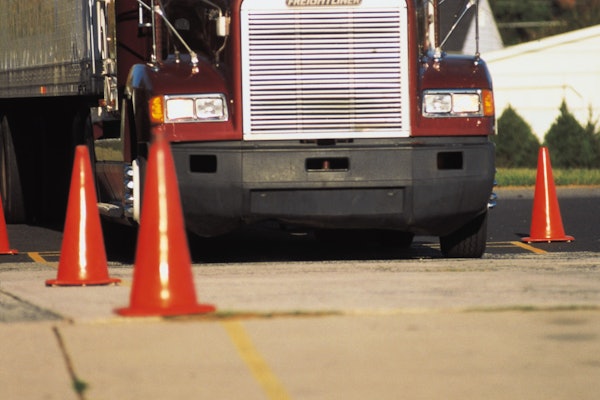Evaluating any given load’s value, it’s crucial not only to consider costs incurred to haul the freight on a per-mile basis, but also in relation to time. Fixed costs like insurance, the truck payment and others are incurred whether an owner-operator is physically moving a load or not, and must be accounted for. Many owners also do not consider their own personal compensation for the operating task as part of those fixed costs, as discussed in the prior part of this piece of the Partners in Business playbook.
If you’re not already paying yourself a salary as a W2 employee of your business in an S Corp structure, profit per day worked can be a good proxy for a salary-per-day figure. For ATBS client owner-operators, that per-day-worked profit/salary as of early 2024 came to an average $268 after all costs are accounted for. Fixed costs, in turn, in 2023 averaged $269 per day, not counting the salary. Armed also with variable costs per mile (fuel, tires and other maintenance expenses, among others) at an average 85 cents/mile among ATBS clients in 2023, we can then estimate total costs for that average owner to haul any given load depending on both time and distance.
For instance, consider a 600-mile load that, realistically, you expect to eat up 1.5 days’ worth of time with load and unload, appointment times and/or other scheduling intricacies. Based on the averages, if the time factor holds, the load will need to pay at least $2.19 per mile to cover fixed and variable costs and yield profit sufficient to cover a salary based on the averages.
What happens if that 600-mile run extends out another half day with load or unload delays?
Distance: 600 miles x Variable cost: 0.85 cents/mile = $510
+ Time: 2 days x Salary + Fixed costs: $537 = $1,074
TOTAL COST TO HAUL THE LOAD = Distance + Time: $1,584, or $2.64/mile
That’s a 20% increase in costs to cover after the increase of time incurred under the load.
If you booked the load at $2.19, you’re in the hole $270 on your expected minimum profit/salary, effectively wiping almost all of it out.
[Related: Time and cost: Where the owner-operator is the smartest guy in a roomful of fleet execs]
Keep in mind, though, the opposite impact also holds true. If you’re able to complete the 600-mile run with a quick load and unload in just a day, a rate of $1.75/mile will meet all costs and the average profit number. If you booked at $2.19, you’ve almost doubled your take in profit -- you're ahead $264 on your salary, and can bank that for further business investment, retirement savings or other use.
Time efficiency throughout the operation can have a huge impact over the long term.
Not all of that is under your control at the docks, of course, but ultimately, you can recognize the value of time on the front end of any load negotiation to make certain the freight’s paying adequately to maintain profitability. Overdrive contributor and owner-operator coach Gary Buchs put together a spreadsheet you can download here. Use it to input your own fixed cost and minimum profit expectation and/or salary per day, and variable cost per mile. When you do that, you can quickly estimate the rate you need for any load and easily see how time impacts that number. (You can do similar on a load-by-load basis, comparing potential profit from gross rates offered, with Overdrive's Load Profit Analyzer, introduced late in 2024 and available for owner-operators via this link.)
Input your numbers at the top of the sheet under fields labeled for per-day fixed costs, salary, and variable per-mile costs, and formulas embedded in the sheet should adjust/populate the lump-sum and per-mile tables below automatically. The Load Profit Analyzer asks for similar inputs, and individual load information, to make comparisons.
[Related: Kick the tires of Overdrive's new Load Profit Analyzer tool]







